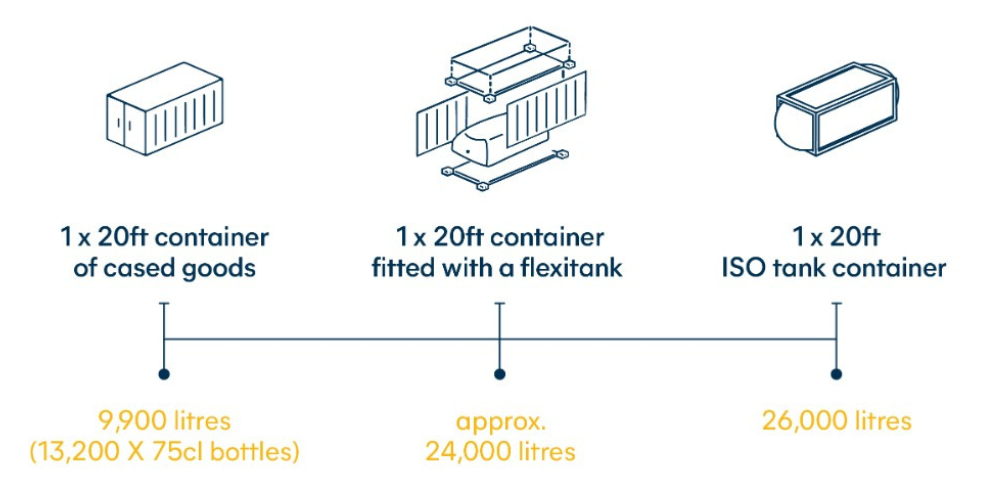The nature of the product you ship can sometimes limit your freight options. Though for many global buyers and sellers there are two options of container shipping:
- Packaged at origin, palletised and shipped
- Shipped in bulk, using flexitanks or ISO tanks for packaging at destination.
So how do you choose which one is right for you? Here’s some things to consider…

Making your money go further
Most commonly discussed and recognised as a benefit of full container load shipping in bulk compared to packaged goods shipping, is the volume of liquid that can be loaded in a single container shipment. You’ll be transporting the equivalent of two 20ft containers of wine using a flexitank, for around the price of one 20ft container.
That said, shipping in bottles gives you the option to move multiple products in one container. Moreover, you have flexibility over volumes shipped, making use of LCL services if needed. Read more on groupage versus full load shipping here.
In-market storage and sale
Many companies are not aware that ISO tanks and flexitanks can be used to store the product they carry. Hillebrand Gori flexitanks can be stored in and out of a container, depending on the environment and length of storage required. So, in this instance, the footprint in storage cost can be less in comparison to a full container of pallets.
Packaging in-market could also provide sellers with more flexibility to meet changing consumer demands and respond quicker with different packaging formats.
But while in-market packaging has these advantages, ready bottled wine can give you the option to change your on-shelf range faster, since the overall quantity shipped and needing to be sold is lower.
Product quality
In terms of actual transport, from origin to destination, bulk shipping could be considered less risky than packaged goods shipping in a dry container. That’s because a larger single volume of liquid has a greater thermal inertia than a smaller one. Meaning it is less prone to experience large temperature variations during transit.
For more information on shipping options for your business, please visit hillebrandgori.com
